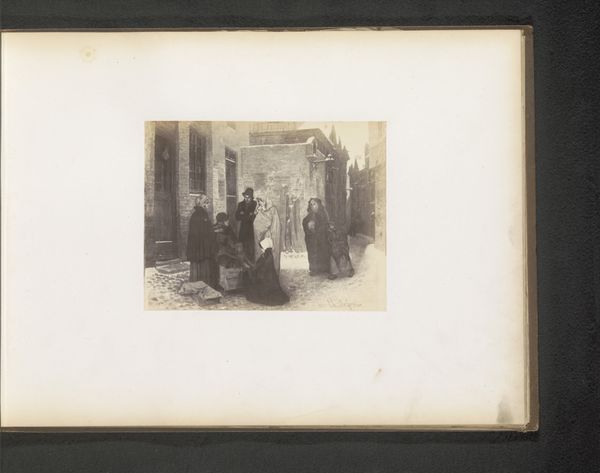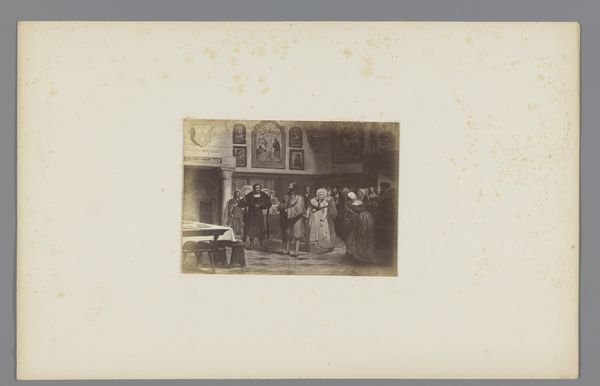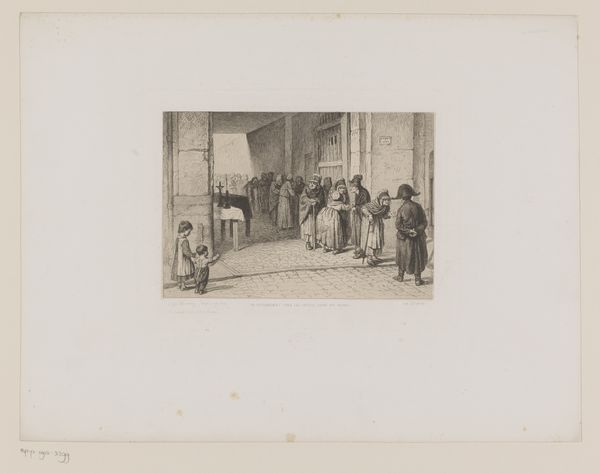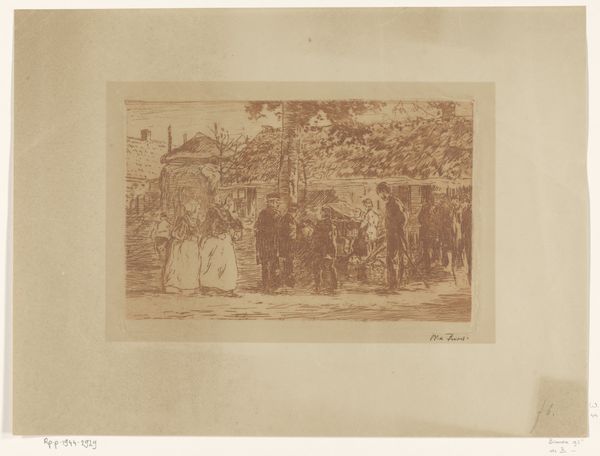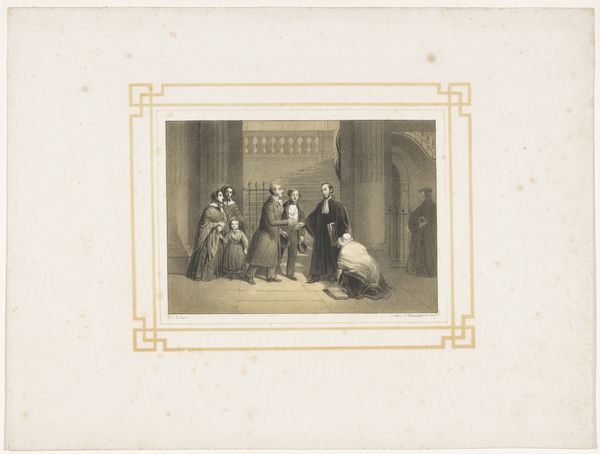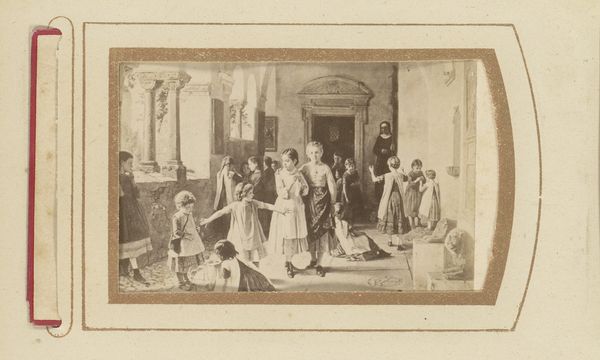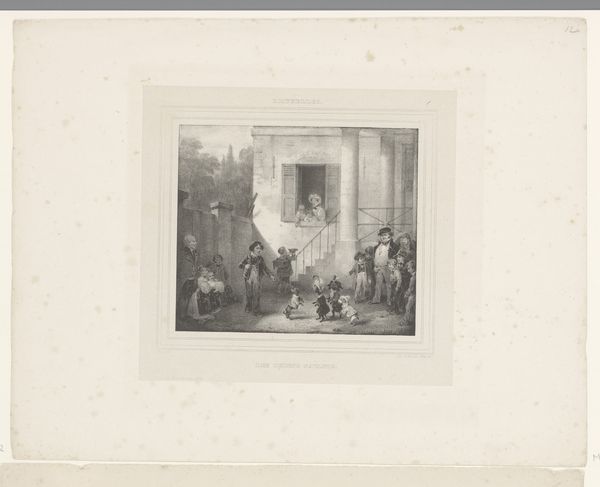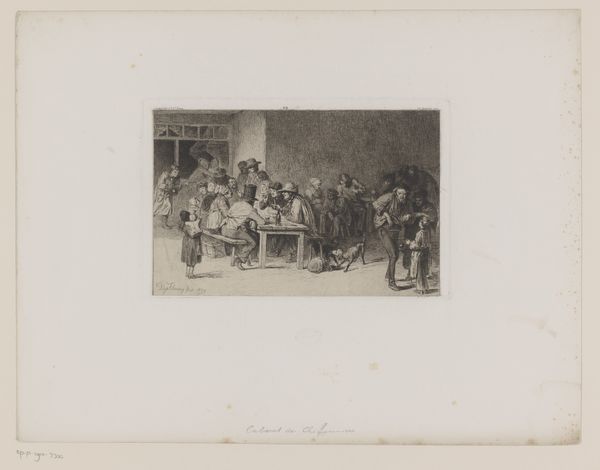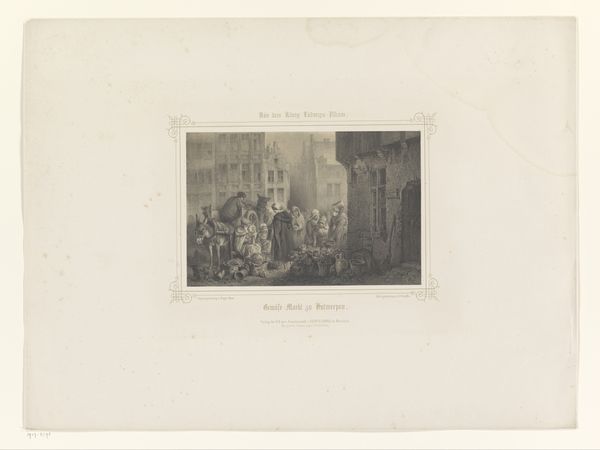
Fotoreproductie van Luther die zingt in de straten van Eisenach door Hendrik Leys before 1863
0:00
0:00
Dimensions: height 266 mm, width 358 mm
Copyright: Rijks Museum: Open Domain
Editor: This is a gelatin-silver print made before 1863, reproducing Hendrik Leys' painting of Luther singing in Eisenach. There's something captivating about how the light plays across the figures. What social narrative is embedded in this representation, especially regarding Luther and his presence in public life? Curator: A fascinating question. Leys was a key figure in the Romantic movement in Belgium. Here, the photographic reproduction, while attempting documentary fidelity, transforms a painted narrative into an object of broader circulation and potentially nationalistic sentiment. Note how Luther’s image, though static, is surrounded by onlookers; what public role for art do you think Leys might be gesturing toward, amplified by the photograph's reproducibility? Editor: So the photograph becomes another form of public expression, furthering Luther's influence and the painting's message to wider audiences? Curator: Precisely. It’s about how the aura of the original work, in this case, a Romantic interpretation of a historical moment, gets re-contextualized through mechanical reproduction, feeding into debates about authenticity and historical narrative within 19th-century political culture. The museum showing such works can reinforce certain ideologies. Does that influence your reading of the work? Editor: I hadn't considered how much the act of photographing and displaying amplifies its cultural importance beyond just an artistic one. It becomes part of constructing a collective memory. Curator: Absolutely, think about how institutions frame such figures in relation to broader societal values. Looking at this, I’m pondering the layering of meanings – a painting of a historical moment, reproduced through photography and consumed by museum audiences in a totally different period! Editor: It's remarkable how many layers of meaning one image can hold when we consider its historical journey and social context. Thank you, it gave me much to think about! Curator: My pleasure. This image reveals to us how the historical representation morphs as socio-political conditions evolve.
Comments
No comments
Be the first to comment and join the conversation on the ultimate creative platform.
